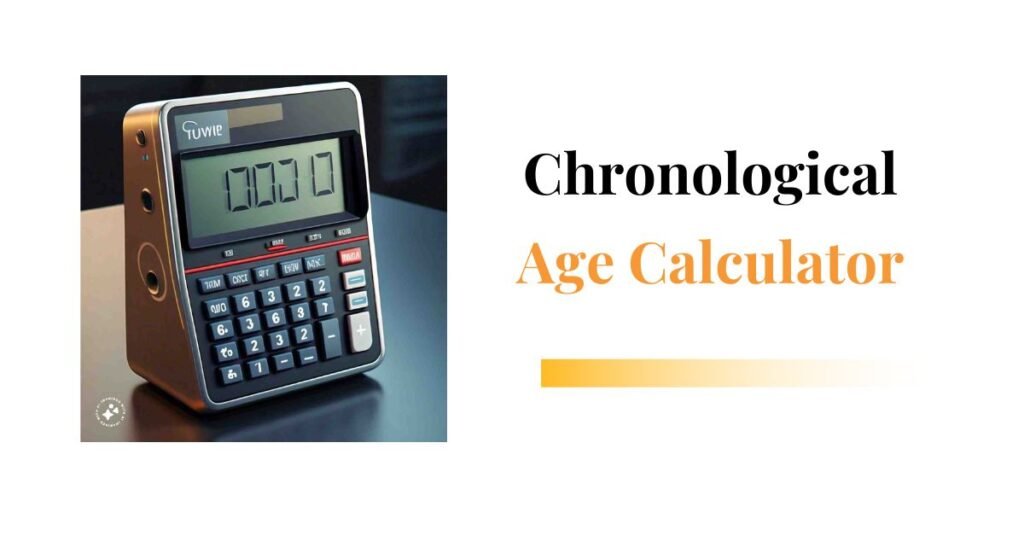
Age Calculator
Chronological Age Calculator: How to Calculate Your Age Easily
Have you ever wondered exactly how old you are in years, months, or even days? Knowing your chronological age can be useful for various reasons, whether you’re planning for retirement, tracking milestones, or just curious about the passage of time. In this guide, we’ll walk you through how to calculate your age step-by-step and explore why it matters.
Why Calculate Your Chronological Age?
Your chronological age is simply the number of years you have been alive since your birth. While it may seem straightforward, knowing your exact age can help in several practical ways:
- Health and Medical Reasons: Healthcare providers often use chronological age as a baseline for assessing health risks and recommending appropriate screenings.
- Financial Planning: Retirement plans and insurance policies may require you to provide your exact age to determine benefits and premiums.
- Personal Milestones: Celebrating birthdays and tracking personal achievements often revolves around knowing your age down to the day.
How to Calculate Your Chronological Age
Calculating your chronological age involves a few basic steps:
- Know Your Birthdate: Start by finding out the exact date you were born. This includes the day, month, and year.
- Current Date: Determine today’s date, including the day, month, and year.
- Simple Math: Subtract your birthdate from today’s date to find out how many years, months, and days have passed since your birth.
Step-by-Step Guide
Step 1: Find Your Birthdate
Your birthdate is the starting point for calculating your chronological age. If you’re unsure of your exact birthdate, check your birth certificate or ask your parents or guardians.
Step 2: Determine Today’s Date
Look at a calendar or check the date on your phone or computer to find out today’s date. Make sure to note the day, month, and year.
Step 3: Subtract to Find Your Age
Once you have both dates:
- Subtract your birth year from the current year to find out how many years have passed.
- If your birthday hasn’t occurred yet this year, subtract one year from the total.
- Then, subtract your birth month from the current month.
- If the current month hasn’t yet reached your birth month, subtract one month from the total.
- Finally, subtract your birth day from the current day to find out how many days have passed since your last birthday.
Example Calculation
Let’s say:
- Your birthdate is January 1, 1990.
- Today’s date is June 1, 2024.
- Years: 2024 – 1990 = 34 years old.
- Months: June (6) – January (1) = 5 months old.
- Days: 1 – 1 = 0 days old.
So, you are 34 years and 5 months old.
Tools to Help
To make it even easier, you can use online age calculators or mobile apps. These tools often provide precise calculations instantly, saving you time and effort.
Why It Matters
Knowing your chronological age isn’t just about numbers. It helps you:
- Plan for the Future: Whether it’s retirement or life milestones, knowing your age is crucial for planning ahead.
- Stay Informed: Health recommendations and screenings often depend on your age, so knowing it can help you stay healthy.
- Celebrate Milestones: Birthdays and anniversaries become more meaningful when you know exactly how many years have passed since you were born.
Conclusion
Calculating your chronological age is a straightforward process that anyone can do with a bit of basic math. Whether you’re curious about your age down to the minute or need it for important paperwork, understanding how to calculate it gives you control over this essential piece of personal information. So go ahead, find out your age today—it’s a simple but empowering step towards understanding more about yourself and your journey through life.